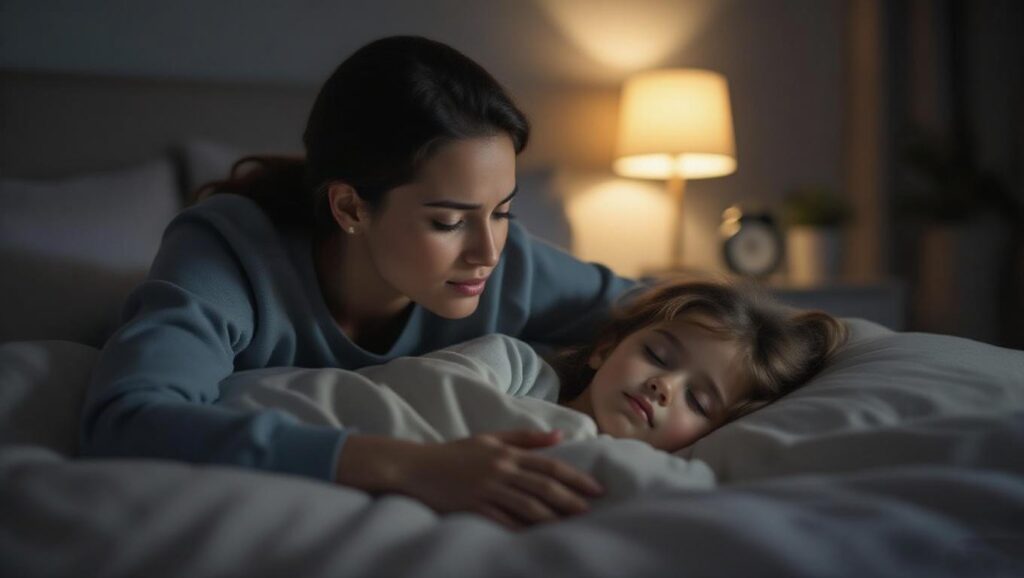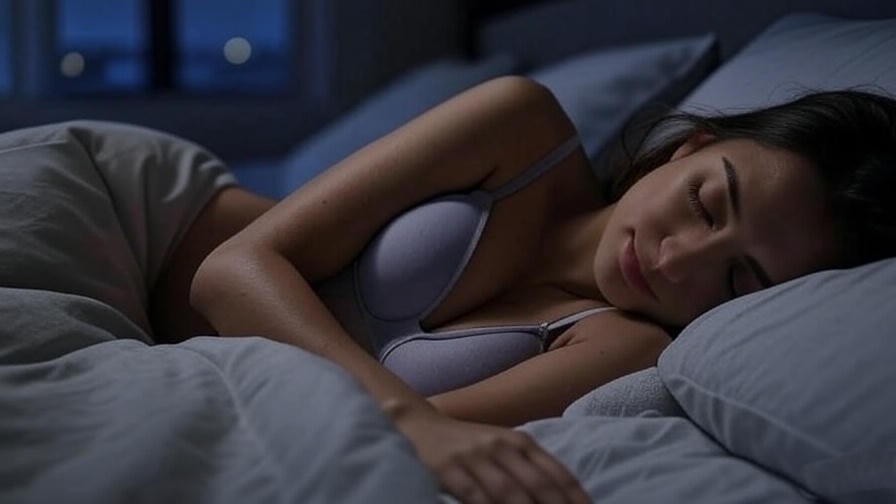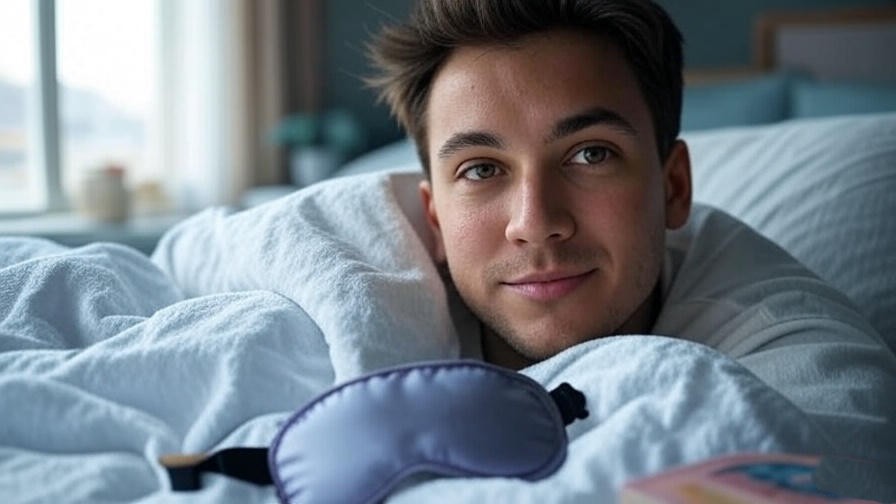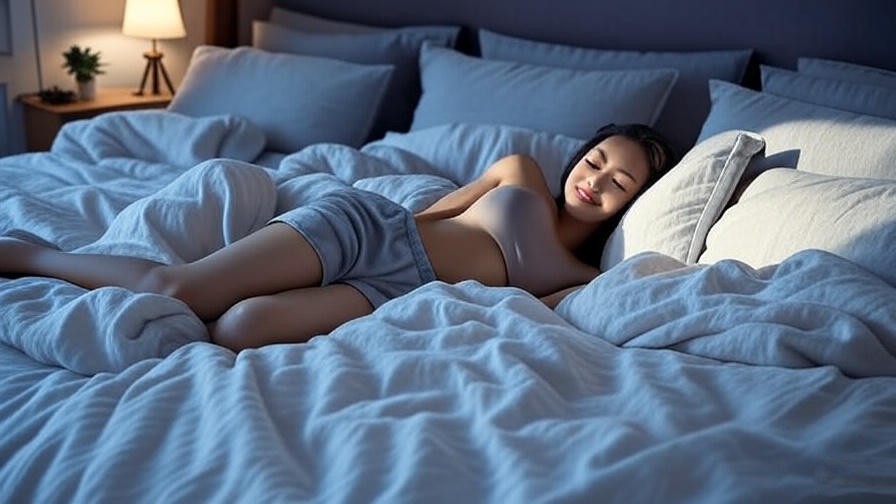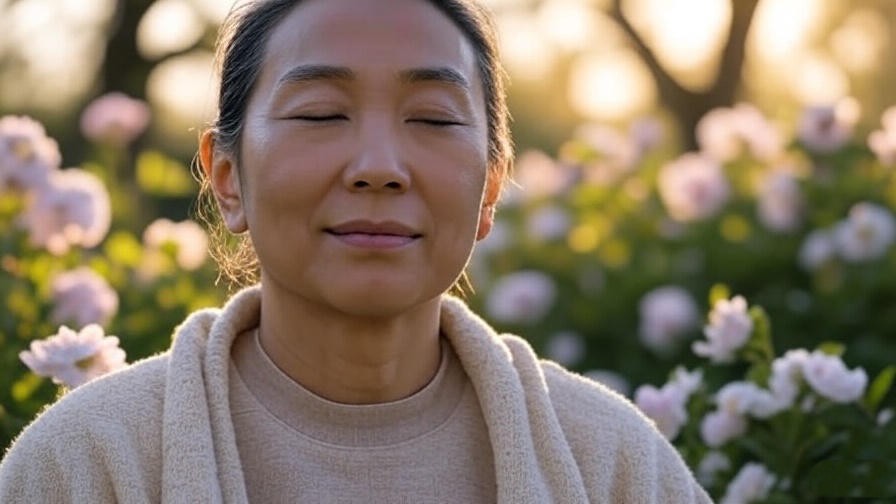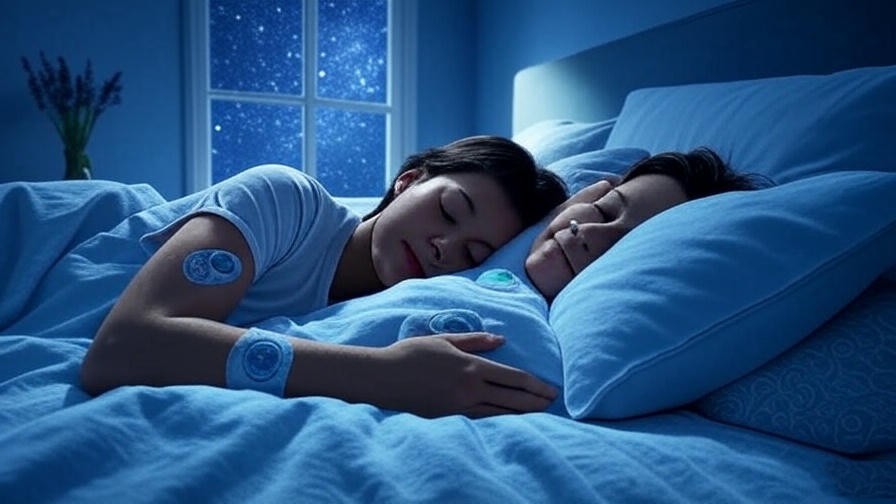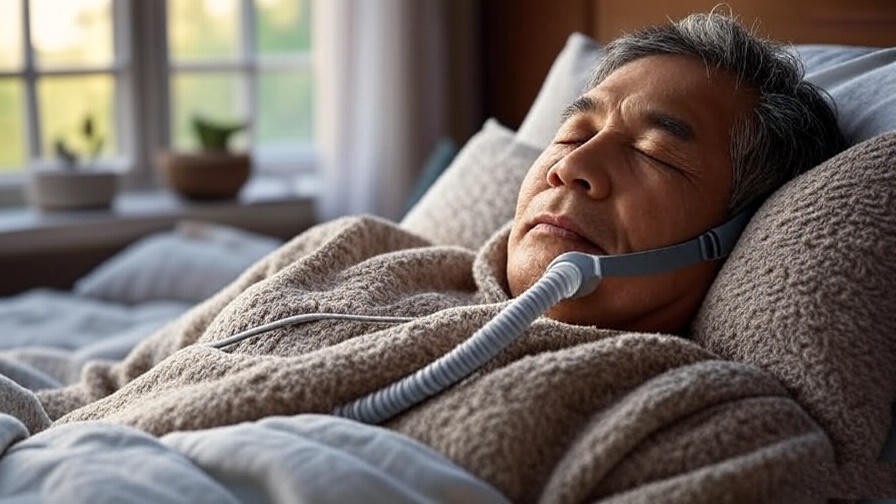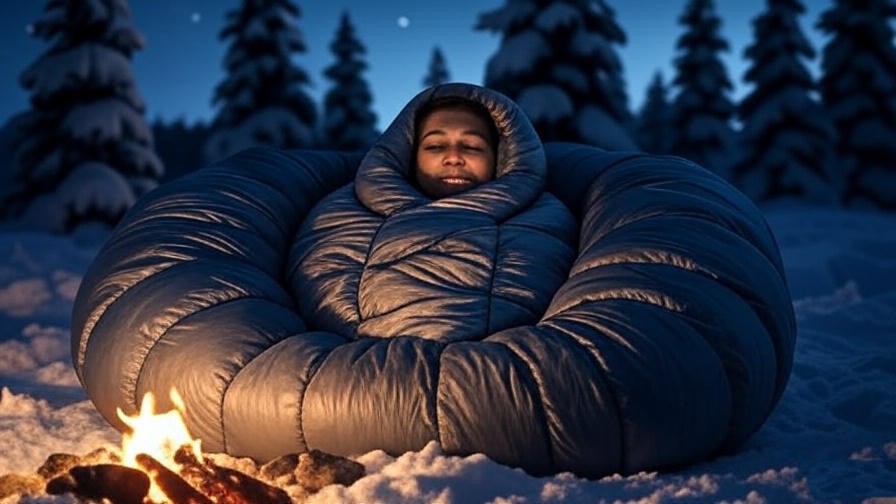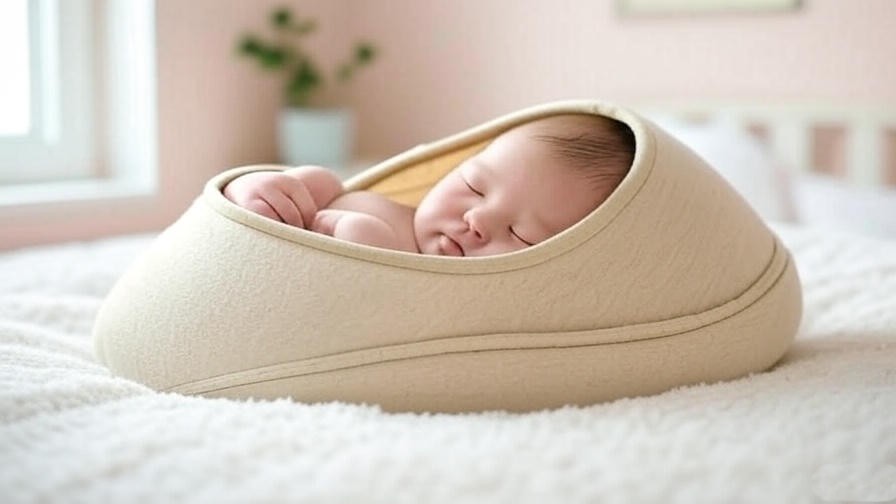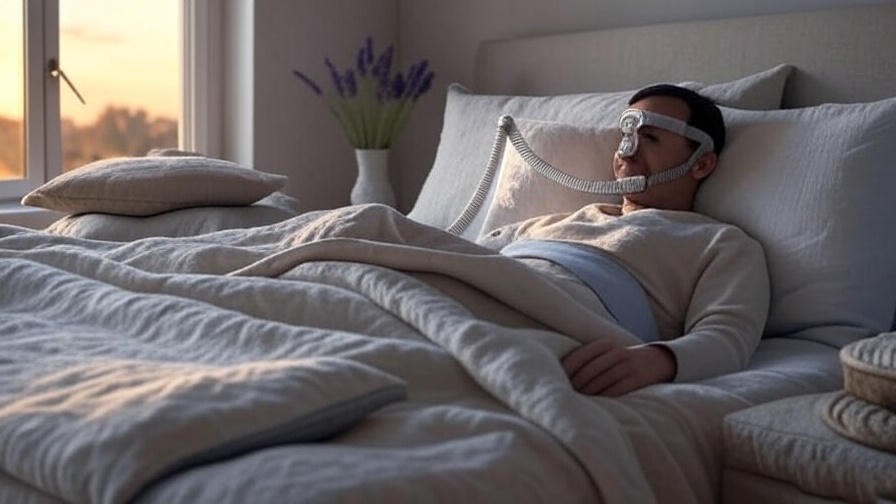Imagine lying awake at night, listening to your child’s loud snoring, punctuated by sudden pauses in breathing. You wonder, “Is this normal, or could it be something serious like sleep apnea?” If you’re a parent asking, “Does my child have sleep apnea?” this quiz and guide are for you. Sleep apnea in children is more common than many realize, affecting up to 5% of kids, according to the American Academy of Pediatrics. Left untreated, it can lead to behavioral issues, developmental delays, and even heart problems. This article offers a practical, parent-friendly quiz to identify potential symptoms, expert insights, and actionable steps to safeguard your child’s health and well-being. Let’s dive in to help you understand, assess, and address this critical sleep disorder.
Understanding Sleep Apnea in Children
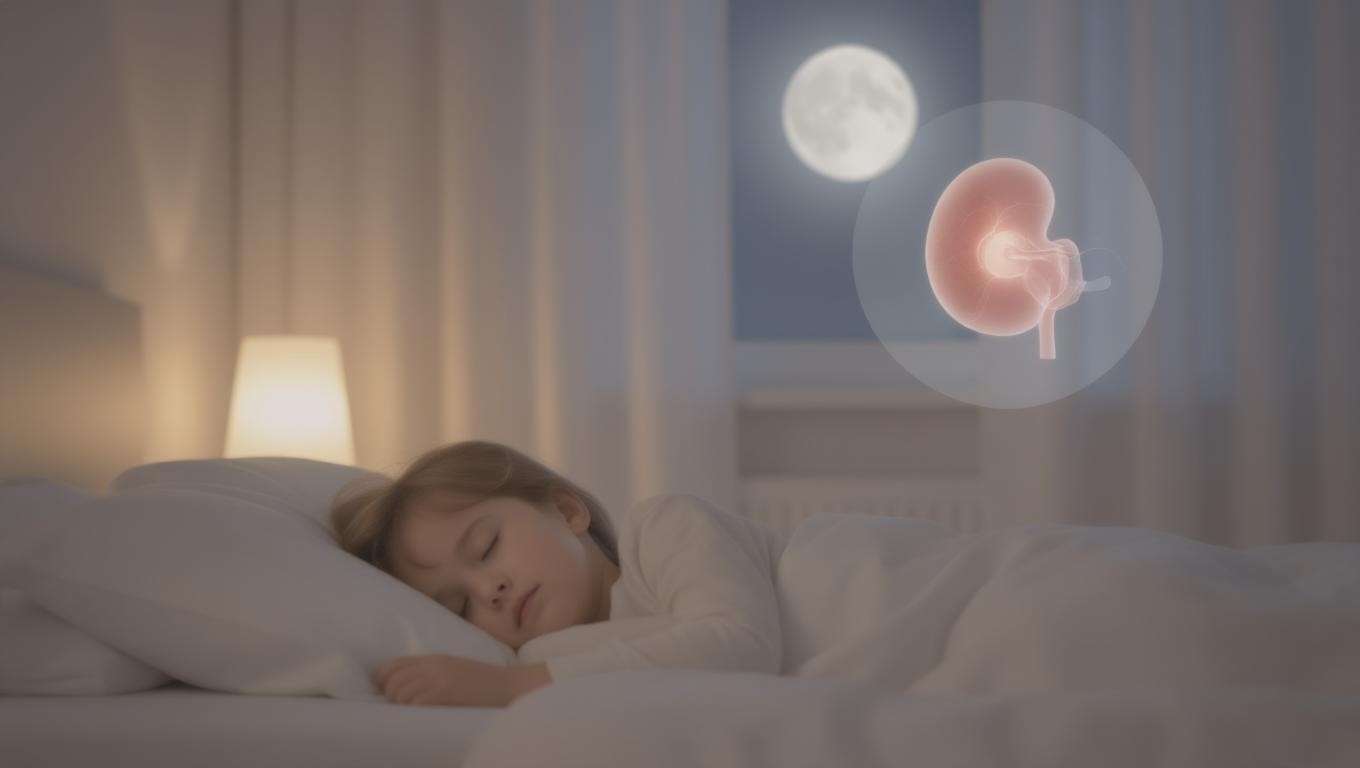
What Is Sleep Apnea?
Sleep apnea is a sleep disorder where breathing repeatedly stops and starts during sleep. In children, the most common type is obstructive sleep apnea (OSA), caused by a blockage in the airway, often due to enlarged tonsils or adenoids. Less common is central sleep apnea, where the brain fails to signal the body to breathe. Unlike adults, who often show excessive daytime sleepiness, children may exhibit hyperactivity, irritability, or poor school performance, making diagnosis trickier. The National Sleep Foundation estimates that 1–5% of children have OSA, with many cases going undiagnosed due to subtle or misattributed symptoms.
Why It Matters for Your Child’s Health
Untreated sleep apnea can disrupt your child’s sleep quality, leading to a cascade of health and behavioral issues. Short-term effects include mood swings, difficulty concentrating, and fatigue, which parents might mistake for typical childhood behavior. Over time, the consequences can be more severe. A 2023 study in Pediatrics linked untreated pediatric sleep apnea to developmental delays, cardiovascular strain, and increased risk of obesity. Dr. Sarah Johnson, a pediatric sleep specialist, notes, “Sleep apnea in kids isn’t just about snoring—it can impact their growth, learning, and emotional well-being.” Early detection is crucial to prevent long-term harm and promote holistic health.
Common Signs and Symptoms of Sleep Apnea in Children
Physical Symptoms to Watch For
Parents often notice physical signs first. Loud, persistent snoring—especially if it occurs more than three nights a week—is a hallmark symptom of pediatric sleep apnea. Other red flags include:
- Pauses in breathing or gasping for air during sleep.
- Restless sleep, with frequent tossing and turning.
- Mouth breathing at night, often accompanied by dry mouth or sore throat in the morning.
- Night sweats or bedwetting, particularly in older children who’ve outgrown it.
- Sleeping in unusual positions, like sitting up or with the neck hyperextended.
These symptoms disrupt oxygen flow, depriving your child’s body and brain of restful sleep.
Behavioral and Cognitive Red Flags
Sleep apnea doesn’t just affect the body—it impacts behavior and cognition. Children may seem overly tired during the day, yet paradoxically, some display hyperactivity, leading to misdiagnoses like ADHD. Other signs include:
- Irritability or mood swings, making it hard for kids to regulate emotions.
- Poor academic performance, as lack of sleep impairs focus and memory.
- Morning headaches, often due to low oxygen levels at night.
- Difficulty waking up, even after a full night’s sleep.
A 2022 study in The Journal of Clinical Sleep Medicine found that 20% of children with undiagnosed OSA were initially evaluated for ADHD, highlighting the overlap in symptoms.
Risk Factors for Pediatric Sleep Apnea
Certain factors increase a child’s likelihood of developing sleep apnea, including:
- Obesity: Excess weight can narrow airways, especially in school-aged children.
- Enlarged tonsils or adenoids: These are the leading cause of OSA in kids aged 2–8.
- Family history: Genetics can play a role in airway structure or sleep disorders.
- Craniofacial abnormalities: Conditions like a small jaw or cleft palate increase risk.
- Medical conditions: Down syndrome, cerebral palsy, or allergies can contribute.
Understanding these risk factors helps parents identify whether their child is more susceptible and take proactive steps.
Does My Child Have Sleep Apnea? Take This Quiz
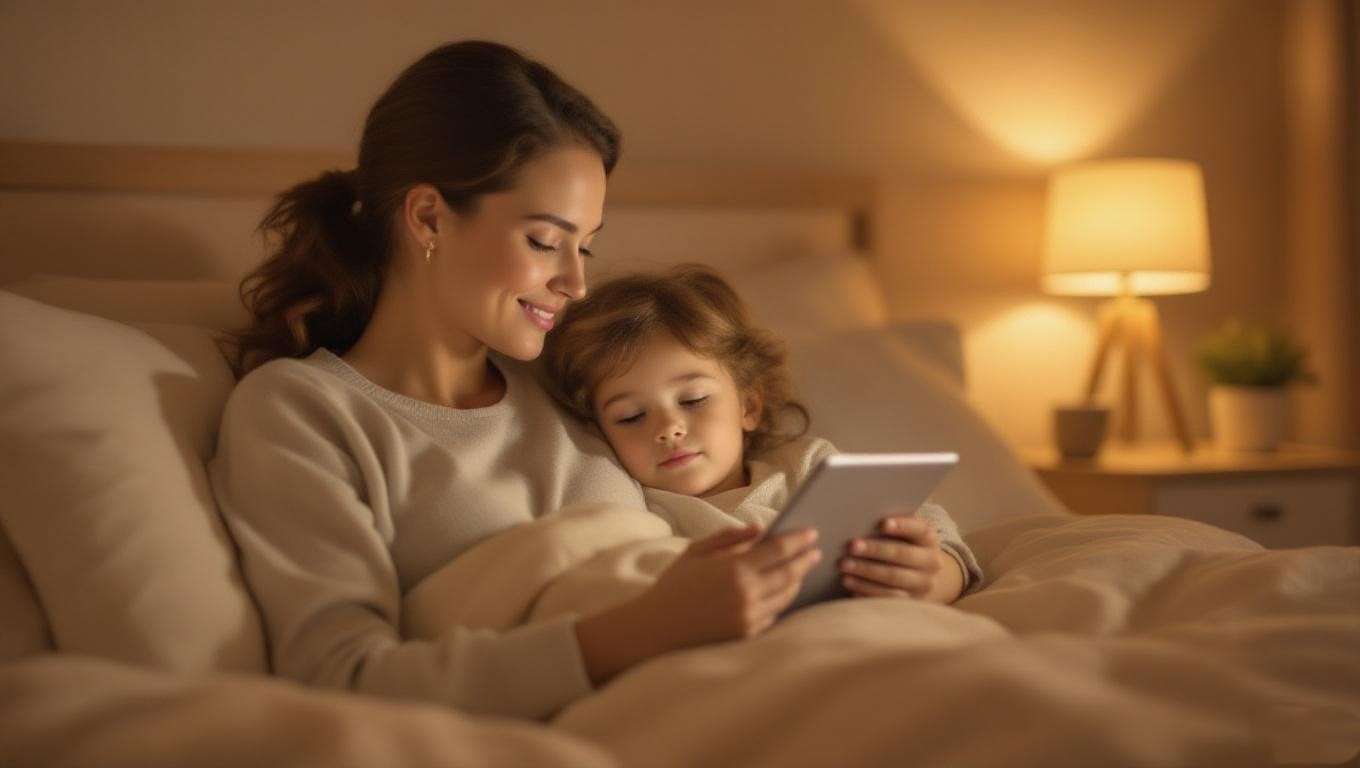
How the Quiz Works
This parent-friendly quiz is designed to help you assess whether your child’s symptoms align with sleep apnea. It’s not a substitute for a medical diagnosis but a starting point to determine if you should consult a pediatrician or sleep specialist. The questions are based on validated symptoms from pediatric sleep research. Answer honestly, and keep a record of your responses to discuss with a healthcare provider.
The Sleep Apnea Symptom Quiz
Take a few minutes to answer these yes/no questions about your child’s sleep and behavior:
- Does your child snore loudly more than three nights a week?
- Have you noticed pauses in your child’s breathing or gasping during sleep?
- Does your child seem restless or toss and turn frequently at night?
- Does your child breathe through their mouth while sleeping?
- Does your child experience night sweats or bedwetting beyond age 5?
- Is your child unusually tired, irritable, or hyperactive during the day?
- Does your child struggle with focus, memory, or school performance?
- Does your child wake up with headaches or a dry mouth?
- Does your child sleep in unusual positions, like sitting up or with their neck extended?
- Does your child have risk factors like obesity, large tonsils, or a family history of sleep apnea?
Scoring Guide:
- 0–2 “Yes” answers: Low risk. Monitor symptoms and maintain healthy sleep habits.
- 3–5 “Yes” answers: Moderate risk. Discuss with a pediatrician, especially if symptoms persist.
- 6+ “Yes” answers: High risk. Consult a pediatrician or sleep specialist promptly.
Download a printable version of this quiz [link to PDF] to share with your doctor.
What Your Quiz Results Mean
- Low Risk: Occasional snoring or mild symptoms may not indicate sleep apnea, but continue observing your child. Lifestyle factors like allergies or poor sleep hygiene could contribute.
- Moderate Risk: Several symptoms suggest a potential issue. Schedule a pediatrician visit to rule out sleep apnea or other sleep disorders.
- High Risk: Multiple symptoms strongly indicate sleep apnea. A sleep study (polysomnography) may be necessary for diagnosis. Act quickly to prevent health complications.
Regardless of your score, trust your instincts as a parent. If something feels off, seek professional advice.
What to Do If You Suspect Sleep Apnea
When to See a Pediatrician or Sleep Specialist
If your quiz results show moderate to high risk, or if symptoms like snoring, breathing pauses, or daytime fatigue persist, consult a pediatrician immediately. They may refer you to a sleep specialist for a polysomnography test, the gold standard for diagnosing pediatric sleep apnea. This overnight study monitors breathing, oxygen levels, and sleep patterns. The American Academy of Sleep Medicine recommends seeking evaluation if snoring is frequent or accompanied by other symptoms, as early intervention can prevent serious complications.
Questions to Ask Your Doctor
To feel confident in your child’s care, ask these questions during your appointment:
- Could my child’s tonsils or adenoids be causing breathing issues?
- Is a sleep study necessary, and what will it involve?
- Are there non-surgical treatments we can try first?
- Could my child’s symptoms be related to another condition, like allergies or ADHD?
- What are the risks of delaying treatment?
- How often should we follow up after diagnosis or treatment?
- Are there lifestyle changes that could improve my child’s symptoms?
These questions empower you to advocate for your child and ensure a thorough evaluation.
Lifestyle Changes to Support Better Sleep
While awaiting a medical evaluation, try these holistic strategies to improve your child’s sleep quality:
- Establish a consistent bedtime routine: A calming routine, like reading or a warm bath, signals the body to wind down.
- Limit screen time: Avoid screens 1–2 hours before bed to promote melatonin production.
- Address weight concerns: If obesity is a factor, consult a pediatrician for a healthy diet and exercise plan.
- Practice mindfulness: Simple breathing exercises or guided meditation can reduce nighttime anxiety, aligning with holistic well-being.
Treatment Options for Pediatric Sleep Apnea

Medical Interventions
Once diagnosed, pediatric sleep apnea can often be treated effectively with medical interventions tailored to the child’s needs. The most common treatments include:
- Adenotonsillectomy: Surgical removal of enlarged tonsils or adenoids is the first-line treatment for most children with obstructive sleep apnea, as these structures often block the airway. According to a 2023 study in The Lancet, this procedure resolves symptoms in up to 80% of cases.
- Continuous Positive Airway Pressure (CPAP): For children who aren’t candidates for surgery or have persistent symptoms, CPAP therapy uses a mask to deliver steady air pressure, keeping airways open. While effective, it can be challenging for younger kids to adapt.
- Orthodontic Devices: In some cases, devices like palatal expanders can help open airways, particularly for children with craniofacial abnormalities.
- Medications: For mild cases linked to allergies, nasal corticosteroids or antihistamines may reduce airway inflammation.
Each option has benefits and risks. Surgery, for example, carries a small risk of bleeding or infection, while CPAP requires consistent use for effectiveness. A pediatric sleep specialist can help weigh these factors based on your child’s condition.
Holistic and Supportive Approaches
In addition to medical treatments, holistic strategies can support better sleep and overall well-being, aligning with the principles of your website’s focus on meditation and happiness:
- Allergy Management: If allergies contribute to nasal congestion, work with a doctor to identify triggers and use saline sprays or hypoallergenic bedding.
- Breathing Exercises: Simple diaphragmatic breathing or mindfulness-based exercises before bed can relax the body and improve airflow. For example, teach your child to inhale deeply for 4 seconds, hold for 4, and exhale for 6.
- Positional Therapy: Encourage side-sleeping, as sleeping on the back can worsen airway obstruction.
- Aromatherapy: Calming scents like lavender, used in a diffuser, may promote relaxation and better sleep quality, though evidence is anecdotal.
These approaches complement medical care and empower parents to create a supportive environment for their child’s health.
Long-Term Monitoring and Follow-Up
Sleep apnea treatment isn’t a one-and-done solution. Regular follow-ups with a pediatrician or sleep specialist are essential to monitor progress and prevent recurrence. For example, children who undergo adenotonsillectomy may need a follow-up sleep study to confirm resolution, as 20% may have residual symptoms, per the American Academy of Sleep Medicine. Parents should also watch for new symptoms, especially during growth spurts or weight changes. A success story from a parent, shared anonymously on a pediatric sleep forum, illustrates this: “After my son’s surgery, his energy and focus improved dramatically, but we kept up with check-ups to stay on top of his sleep health.”
Preventing Sleep Apnea and Promoting Healthy Sleep
Creating a Sleep-Friendly Environment
A bedroom optimized for sleep can reduce the risk of sleep apnea symptoms and promote restful nights. Consider these tips:
- Keep it dark and quiet: Use blackout curtains and a white noise machine to block disruptions. White noise can also mask snoring, helping siblings sleep better.
- Maintain a cool temperature: Set the thermostat to 65–70°F (18–21°C) for optimal sleep comfort.
- Choose supportive bedding: A firm mattress and hypoallergenic pillows reduce airway irritation and support proper alignment.
- Incorporate calming elements: Soft lighting or a bedtime diffuser with lavender oil ties into holistic well-being, creating a serene atmosphere.
These changes create a foundation for healthy sleep, benefiting the whole family.
Building Healthy Sleep Habits
Consistent sleep habits are critical for children, especially those at risk for sleep apnea. A checklist for parents includes:
- Set a regular bedtime and wake-up time: Consistency regulates the body’s internal clock, even on weekends.
- Limit caffeine and sugar: Avoid these in the afternoon, as they can disrupt sleep onset.
- Encourage physical activity: At least 60 minutes of daily exercise (e.g., biking, swimming) promotes deeper sleep and helps manage weight.
- Create a screen-free wind-down: Reading a book or practicing a short meditation can signal bedtime, reducing stimulation.
For toddlers, a routine might include a bath, story, and lullaby. For teens, emphasize the importance of avoiding late-night phone use, which suppresses melatonin.
The Role of Diet and Exercise
Diet and exercise play a significant role in preventing obesity-related sleep apnea. A balanced diet rich in fruits, vegetables, lean proteins, and whole grains supports healthy weight management. A 2024 study in The Journal of Pediatric Health found that children with higher fiber intake had lower rates of sleep-disordered breathing. Limit processed foods and sugary drinks, which contribute to weight gain and inflammation. Exercise, such as 30 minutes of moderate activity daily, improves cardiovascular health and reduces airway fat deposits. For example, family walks or dance sessions can make fitness fun and sustainable, aligning with your website’s holistic approach.
Frequently Asked Questions (FAQs)
- Can sleep apnea in children go away on its own?
In some cases, mild sleep apnea caused by temporary factors like allergies may improve with treatment. However, persistent symptoms, especially those linked to tonsils or obesity, typically require intervention. Always consult a doctor for clarity. - How is pediatric sleep apnea diagnosed?
Diagnosis usually involves a polysomnography test, which monitors breathing, oxygen levels, and sleep stages. A pediatrician may also perform a physical exam or order imaging to assess airway structure. - What are the risks of untreated sleep apnea in kids?
Untreated sleep apnea can lead to developmental delays, poor academic performance, behavioral issues, and cardiovascular problems. Early treatment is critical to prevent these outcomes. - Is snoring normal in children?
Occasional snoring due to a cold or allergies is common, but loud, frequent snoring (more than three nights a week) warrants evaluation, as it may indicate sleep apnea. - Can lifestyle changes alone treat sleep apnea?
For mild cases, weight management, allergy control, or sleep hygiene improvements may help. However, moderate to severe cases often require medical intervention like surgery or CPAP.
These FAQs address common parent concerns, using schema markup for SEO and potential rich snippets.
Expert Insights and Resources

What Pediatric Sleep Experts Say
Dr. Emily Carter, a board-certified pediatric sleep specialist, emphasizes, “Parents are often the first to notice sleep apnea symptoms, but they may dismiss them as ‘normal’ snoring. Trust your instincts and seek a professional evaluation.” The American Academy of Pediatrics reinforces this, recommending routine screening for sleep issues during well-child visits. Research from the National Sleep Foundation highlights that early intervention can improve a child’s quality of life by 30–40% in terms of focus, mood, and energy.
Recommended Resources for Parents
For further learning, explore these trusted resources:
- Books: Solve Your Child’s Sleep Problems by Dr. Richard Ferber offers practical advice for parents.
- Websites: The National Sleep Foundation (sleepfoundation.org) and CDC (cdc.gov/sleep) provide evidence-based information on pediatric sleep disorders.
- Support Groups: Online communities like the American Sleep Apnea Association’s forums connect parents for shared experiences and tips.
Internal links to your website’s articles, such as “5 Calming Bedtime Routines for Kids” or “Mindfulness for Better Family Sleep,” can enhance engagement and SEO.
Conclusion
Sleep apnea in children is a serious but treatable condition that affects their health, happiness, and development. By recognizing symptoms like loud snoring, breathing pauses, or daytime fatigue, parents can take the first step toward protecting their child’s well-being. Our “Does My Child Have Sleep Apnea?” quiz offers a practical tool to assess risks and guide your next steps. Whether it’s consulting a pediatrician, adopting healthy sleep habits, or exploring holistic strategies like mindfulness, you have the power to make a difference. Take the quiz today, share this guide with other parents, and explore more sleep and well-being tips on our site to support your family’s journey to restful nights.

